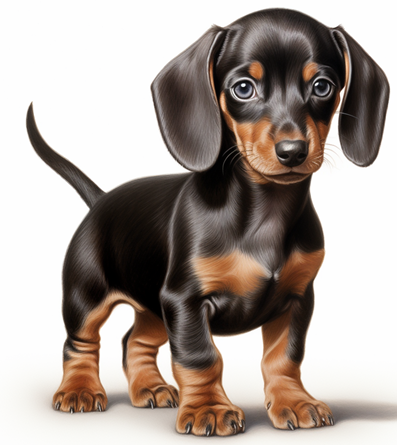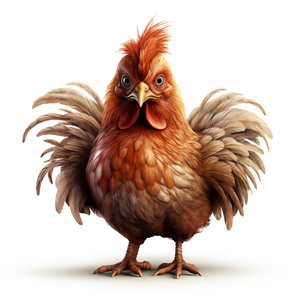Mutations - changes in the genetic code
Point mutation: a single point in the sequence is changed. For instance a G is changed to an A.
Compare this to reading a sentence
Cats eat big rat. --> point mutation --> Cats eat big hat
The sentence is still almost recognizeable, the protein changed in this case might still function.
FRAMESHIFT MUTATION - a point mutation that involves a substitution or deletion, which results in a a shift in the reading frame.
Cats eat big rat --> add an additional letter A, and the reading frame changes
Aca tse atb igr at - this protein does not resemble the original and will probably not be functional
Chromosomal Mutations
-
Deletion: A part of a chromosome is missing. For instance, in the genetic disorder Cri-du-chat syndrome, a portion of chromosome 5 is deleted, leading to intellectual disability and distinct facial features.
-
Duplication: An extra portion of a chromosome is present. This can cause various genetic disorders depending on the specific genes involved.
-
Inversion: A segment of the chromosome breaks off, flips, and reattaches in the reversed orientation. This can lead to altered gene expression and potential genetic disorders.
-
Translocation: Part of one chromosome breaks off and attaches to another chromosome. In some cases, this can lead to health issues, such as in chronic myeloid leukemia (CML), where a translocation between chromosomes 9 and 22 forms the Philadelphia chromosome.
-
Insertion: A segment of DNA is inserted into a chromosome. This can cause disruptions in gene function or expression, potentially leading to health issues.
Deletion (1)
Duplication (2)
Inversion (3)

Examples of Mutations
Humans
-
Cystic Fibrosis (CF): CF is caused by mutations in the CFTR gene. These mutations result in the production of thick and sticky mucus, affecting the lungs, pancreas, and other organs, leading to respiratory and digestive problems.
-
Sickle Cell Anemia: This is caused by a mutation in the HBB gene, leading to the production of abnormal hemoglobin (HbS). This abnormal hemoglobin causes red blood cells to become rigid and assume a "sickle" shape, leading to blood vessel blockages and various complications.
-
Huntington's Disease: Caused by a mutation in the HTT gene, leading to the production of a toxic form of the huntingtin protein. This mutation results in progressive brain cell deterioration, leading to severe physical and mental decline.
-
Breast Cancer (BRCA1 and BRCA2): Mutations in the BRCA1 and BRCA2 genes significantly increase the risk of breast and ovarian cancers. These genes are involved in repairing damaged DNA, and mutations can lead to uncontrolled cell growth and tumor formation.
-
Familial Hypercholesterolemia: This genetic disorder is caused by mutations in genes like LDLR (low-density lipoprotein receptor) or APOB, resulting in high levels of low-density lipoprotein (LDL) cholesterol and an increased risk of cardiovascular diseases.
-
Tay-Sachs Disease: This is caused by mutations in the HEXA gene, leading to the absence or dysfunction of an enzyme that breaks down lipids in nerve cells. This results in the accumulation of harmful substances, leading to progressive neurological deterioration.
-
Polycystic Kidney Disease (PKD): Mutations in PKD1 or PKD2 genes cause the formation of fluid-filled cysts in the kidneys, leading to kidney damage and possibly kidney failure.
Animals

-
Dog Breeds:
- Dachshund: The short legs of Dachshunds are a result of a mutation affecting their bone growth, leading to the breed's distinct appearance.
- Corgi: Similarly, the short-legged trait in Corgis is due to a genetic mutation that has been selectively bred for.
- Chinese Crested Dog: This breed's lack of fur is due to a genetic mutation leading to hairlessness, resulting in their unique appearance.
- Cat Breeds:
- Sphynx Cat: The hairless trait in Sphynx cats is due to a natural genetic mutation.
- Scottish Fold: This breed is known for its distinctive folded ears, which is the result of a genetic mutation affecting cartilage development.
- Polydactyly: This mutation results in extra digits or toes. Cats with extra toes, known as "polydactyl cats," are a famous example. Dogs, horses, and humans can also have this condition.
- Chicken Breeds:
- Silkie Chicken: The unique fluffy feather trait in Silkies is due to a mutation that affects their feather structure, giving them a distinctive appearance.
- Frizzle Chicken: These birds have feathers that curl outward rather than lying flat, which is a result of a genetic mutation that affects the feather growth pattern.

- Cattle Breeds:
- Belgian Blue Cattle: These cattle have a genetic mutation known as "double muscling," leading to an increased muscle mass that has been selectively bred for.